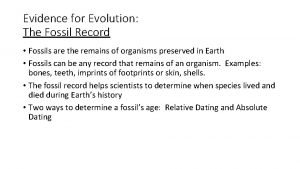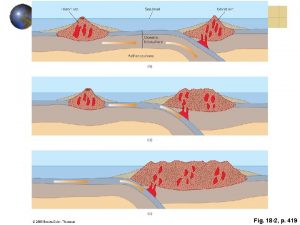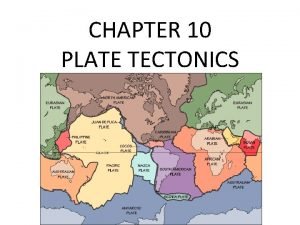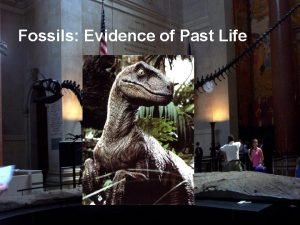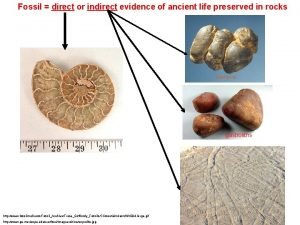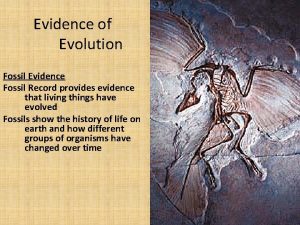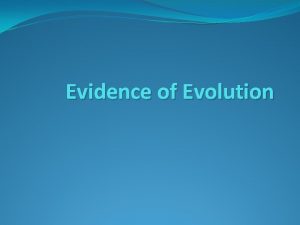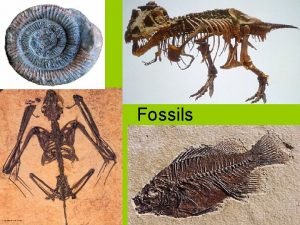Evidence for Evolution The Fossil Record Fossils are







- Slides: 7

Evidence for Evolution: The Fossil Record • Fossils are the remains of organisms preserved in Earth • Fossils can be any record that remains of an organism. Examples: bones, teeth, imprints of footprints or skin, shells. • The fossil record helps scientists to determine when species lived and died during Earth’s history • Two ways to determine a fossil’s age: Relative Dating and Absolute Dating

What other evidence supports evolution? Many fields of study provide evidence that modern species and extinct species share an ancestor. Structural data, DNA, developmental patterns, and fossils all support theory that populations change over time.

Fossils- the remains or imprints of once-living organisms. They commonly form when a dead organism is covered by a layer of sediment or mud. Minerals in the sediment may seep into the organism and replace the body’s material with minerals that harden over time.

Evidence that organisms have changed over time can be found in amber, ice, or sedimentary rock. Sedimentary rock is formed when particles of sand or soil are deposited in horizontal layers. The rule for dating rocks and the remains of organisms inside is “the deeper it is, the older it is”.

Relative Dating: Fossil Layers • The Law of Superposition: Sedimentary layers are deposited in a time sequence, with the oldest on the bottom and the youngest on the top. • In other words, if one fossil is on top of another, the top one will be the newest. • Index fossil: shorthand way to identify a geologic age. Younger Older

Absolute Dating • Absolute dating is the process of determining an age on a specified sequence of events in archaeology and geology. Some scientists prefer the terms chronometric or calendar dating. • Methods: • Stratigraphy- age of the rock layers it is found in. • Radioactive decay-Radioactive decay is a term used to describe the changes in an atom once it has become unstable and begins to lose its particles.

Fossil Evidence Scientists have examined fossils of extinct species that have features in between whales and land mammals. These features are called transitional characters. None of these species are directly related to modern whales. But their skeletons suggest how a gradual transition from land mammal to aquatic whale could have happened.
